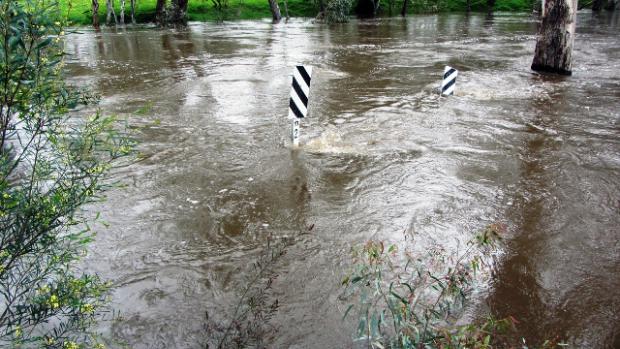Loading
The ups and downs of floods

Weeks of flooding in the Campaspe River has shown that when it comes to water, Mother Nature can be both cruel and kind.
The floods provided a much-needed drink for plants and trees higher up the banks of the Campaspe, and fast-flowing tributaries brought in seeds and propagules – broken-off plants that will regrow downstream.
However, the floodwaters were not good for everything in the river.
The flood interrupted the platypuses breeding season, impacting on their numbers this spring.
North Central Catchment Management Authority (CMA) Environmental Water Manager Louissa Rogers said overall, floods are beneficial for rivers, but often come at a cost.
“Floods do what environmental flows can’t. This year they provided a bank-full flow that watered the young trees and shrubs on the river bank and flushed sediment out of the deep pools,” she said.
“They also bring seeds down from tributaries, which can establish on the banks and grow when the water subsides. That is extra important for rivers like the Campaspe, because most of the seeds and organic matter get trapped behind the Lake Eppalock dam wall.
“But a natural flood doesn’t do everything a managed environmental flow can. Managed environmental flows can rehabilitate a river and build resilience to help it cope with extreme events like droughts and floods.
Since the Millennium Drought and the 2010-11 floods, the North Central CMA has been slowly building the Campaspe River back to life.
“The impacts of the 2016 floods won’t be as bad as 2010-11. We have built a lot of resilience into the river since then, and since the drought, and it is starting from a healthy position,” Ms Rogers said.
“However, it is important our environmental flows over the next 12 months can capitalise on the benefits these floods will bring, and help the river thrive, not just survive.
“We also need to carefully manage our flows over the next few platypus breeding seasons to lessen the impact of the loss of the babies. The platypus population in the Murray downstream of Echuca is, according to the Australian Platypus Conservancy, critically endangered, and the Campaspe River is a vital source to help the species survive.
“Future environmental flows will also be important for native fish. They are expected to lay a lot of eggs in the coming season, and it is important the conditions are right to ensure they thrive.”
Ms Rogers said the managed flow regime for the medium term will focus on building on the benefits of the flood and repairing any damage.
“There is a lot more to managing the health of a river than just adding water. It is about adding the right amount of water at the right time,” she said.
“In most years natural inflows are captured in storages, so while the floods were good they cannot simply replace an environmental flow, especially when they came when the weather was still cool.
“Ideally, we would like to put another high flow down the river before summer, to feed the expected new growth. However, with the flows high until recently, the new plants and seeds won’t be established in time to be watered before the harshness of summer kicks in, and a high flow won’t be possible.
“High flows in summer can increase the risk of a toxic blackwater event, which can be disastrous.
“If the floods came two weeks earlier, there might have been a chance for a fresh, but that won’t happen now. Instead, the focus will turn to the coming months.”
Environmental flows are authorised by the Victorian Environmental Water Holder in line with its Seasonal Watering Plan 2016-17 in partnership with Goulburn Murray Water. The VEWH Seasonal Watering Plan 2016-17 is available for download from www.vewh.vic.gov.au, with regular watering updates posted on the North Central CMA website www.nccma.vic.gov.au.
